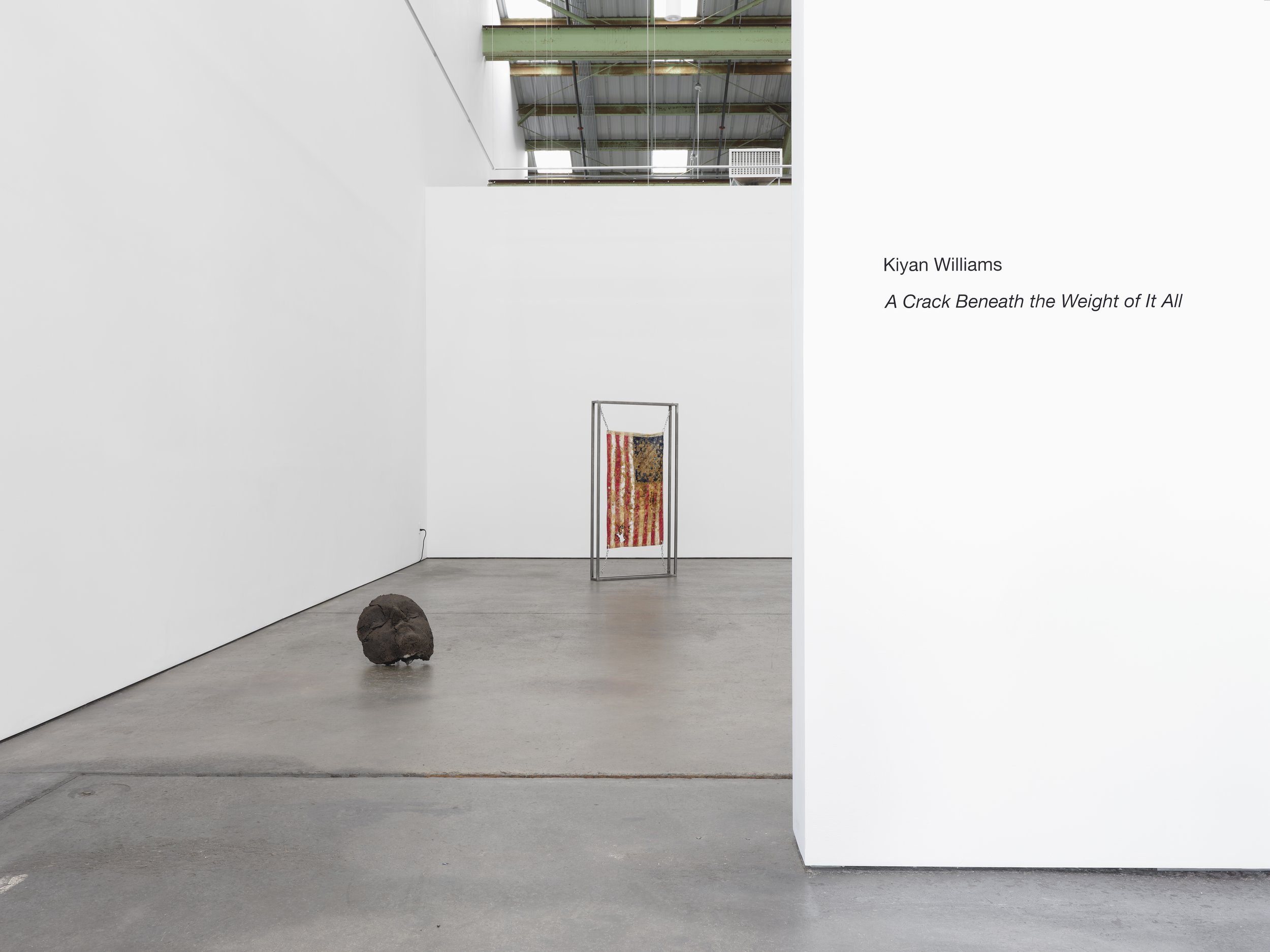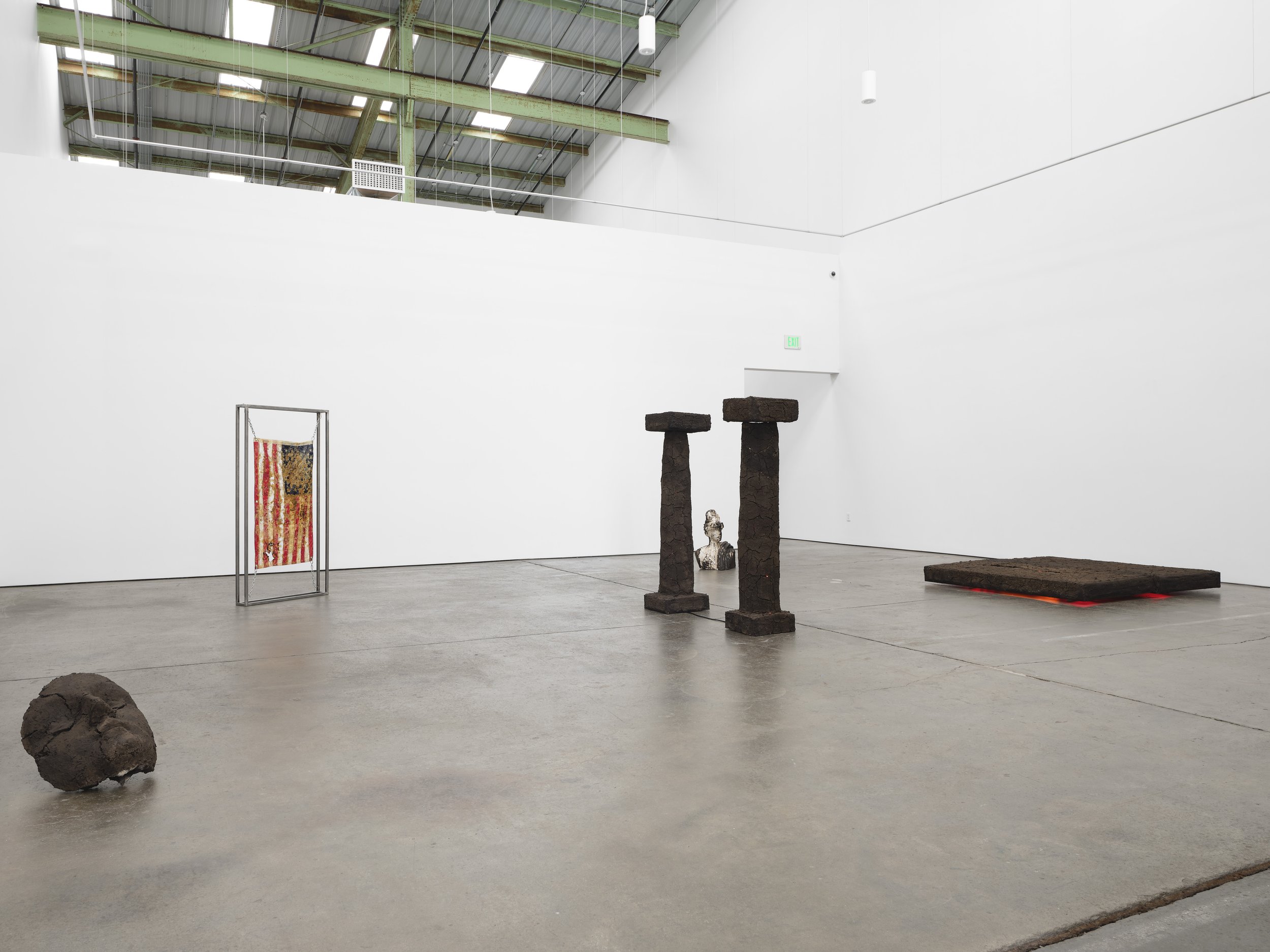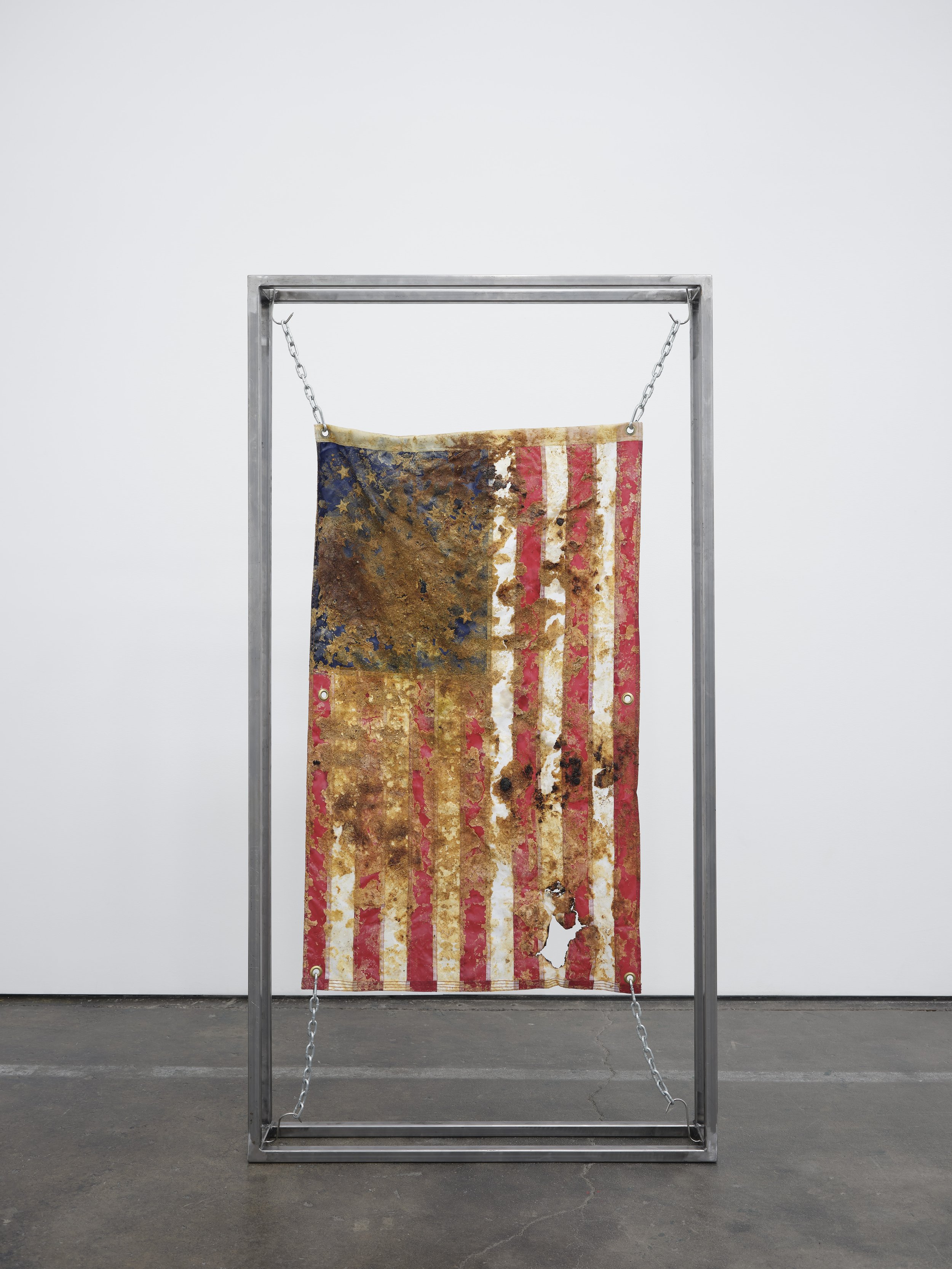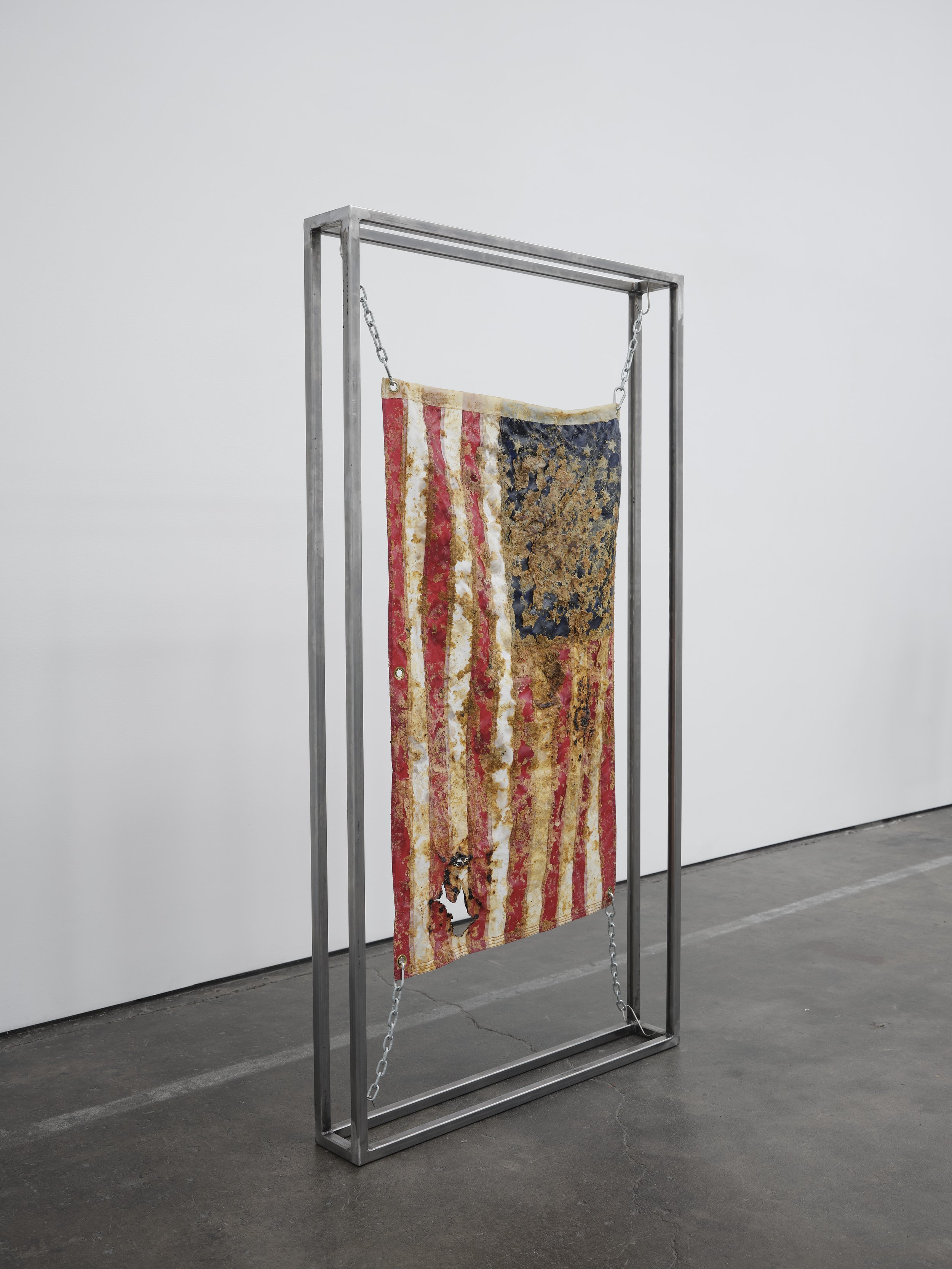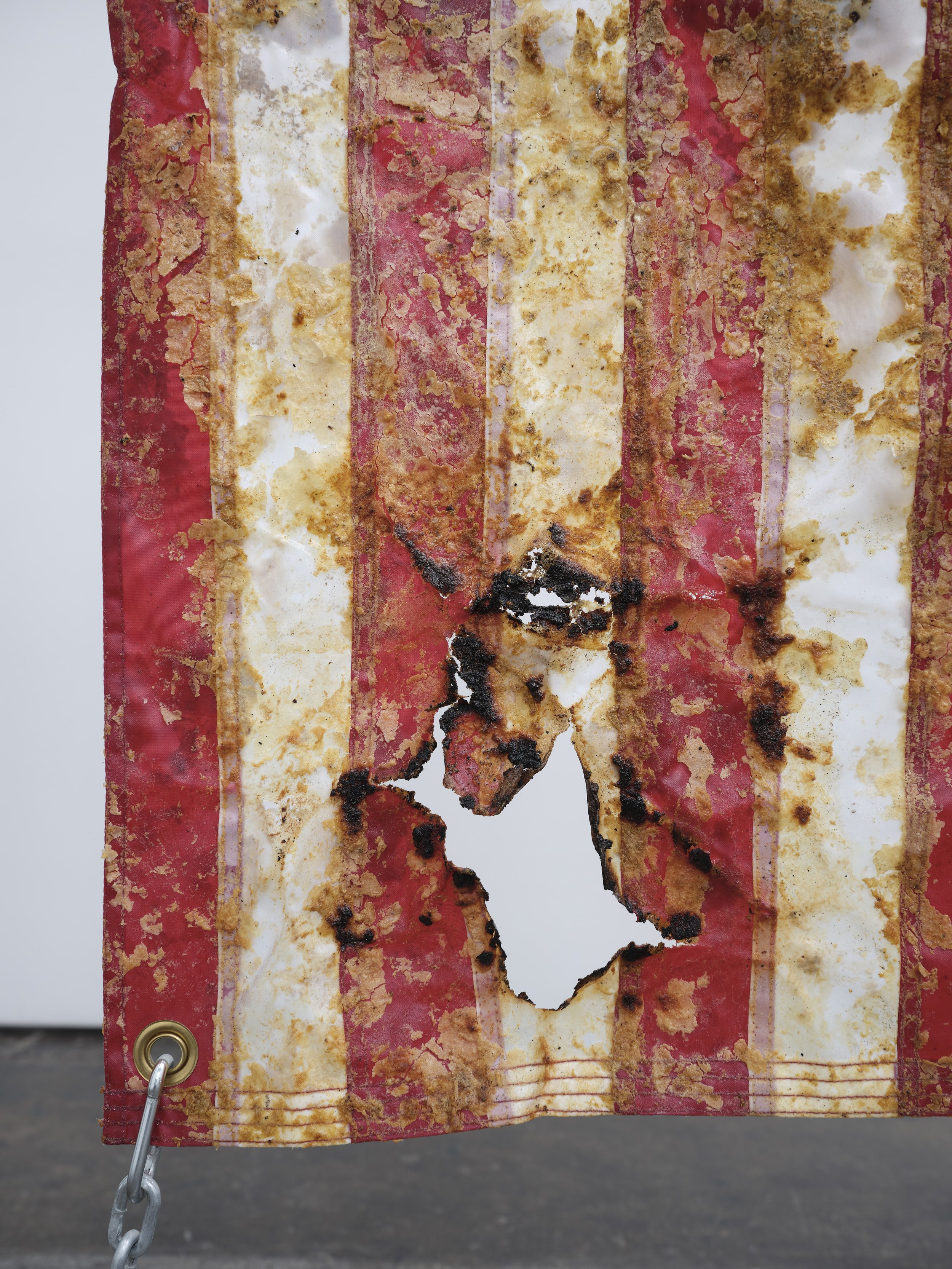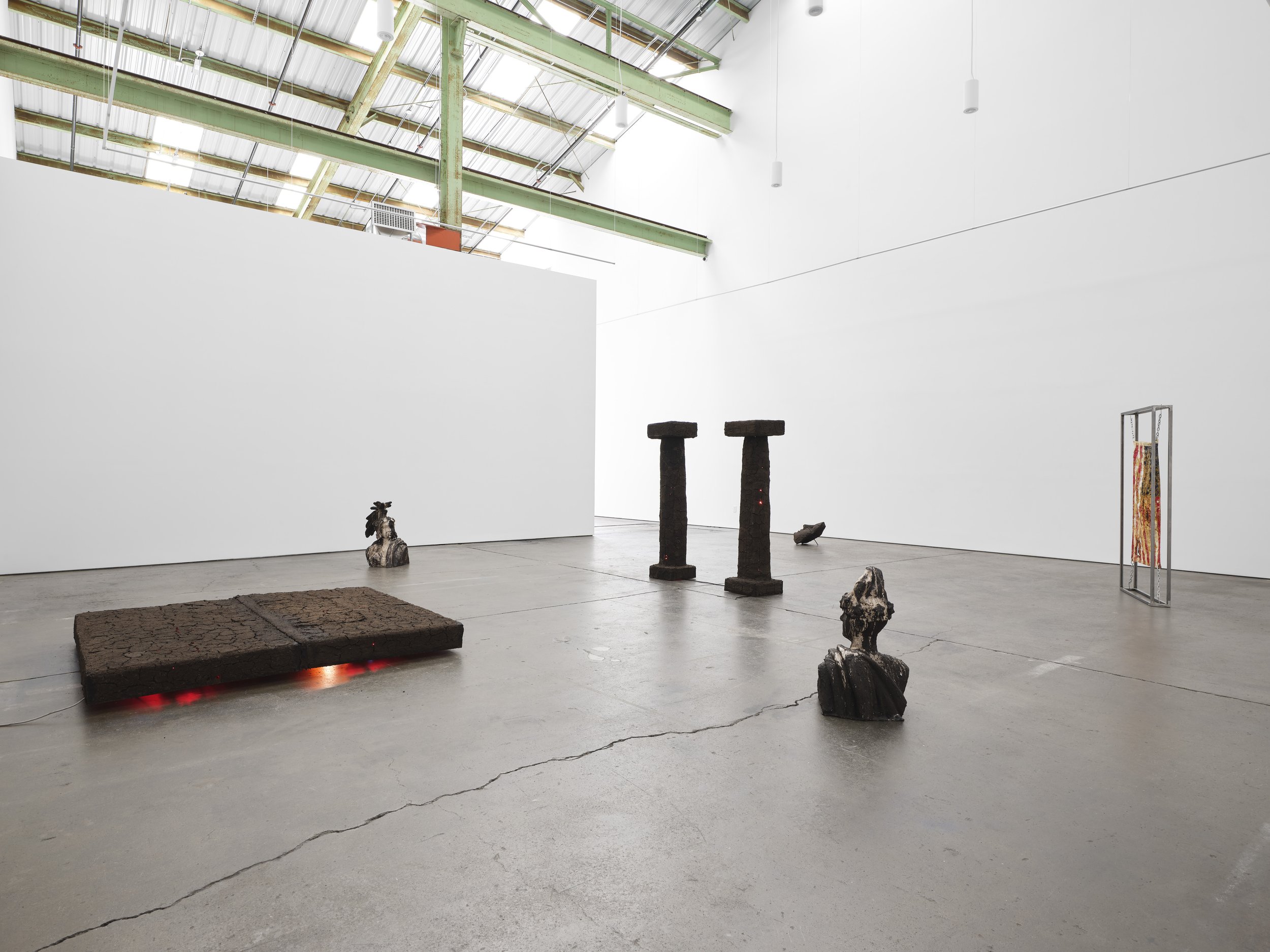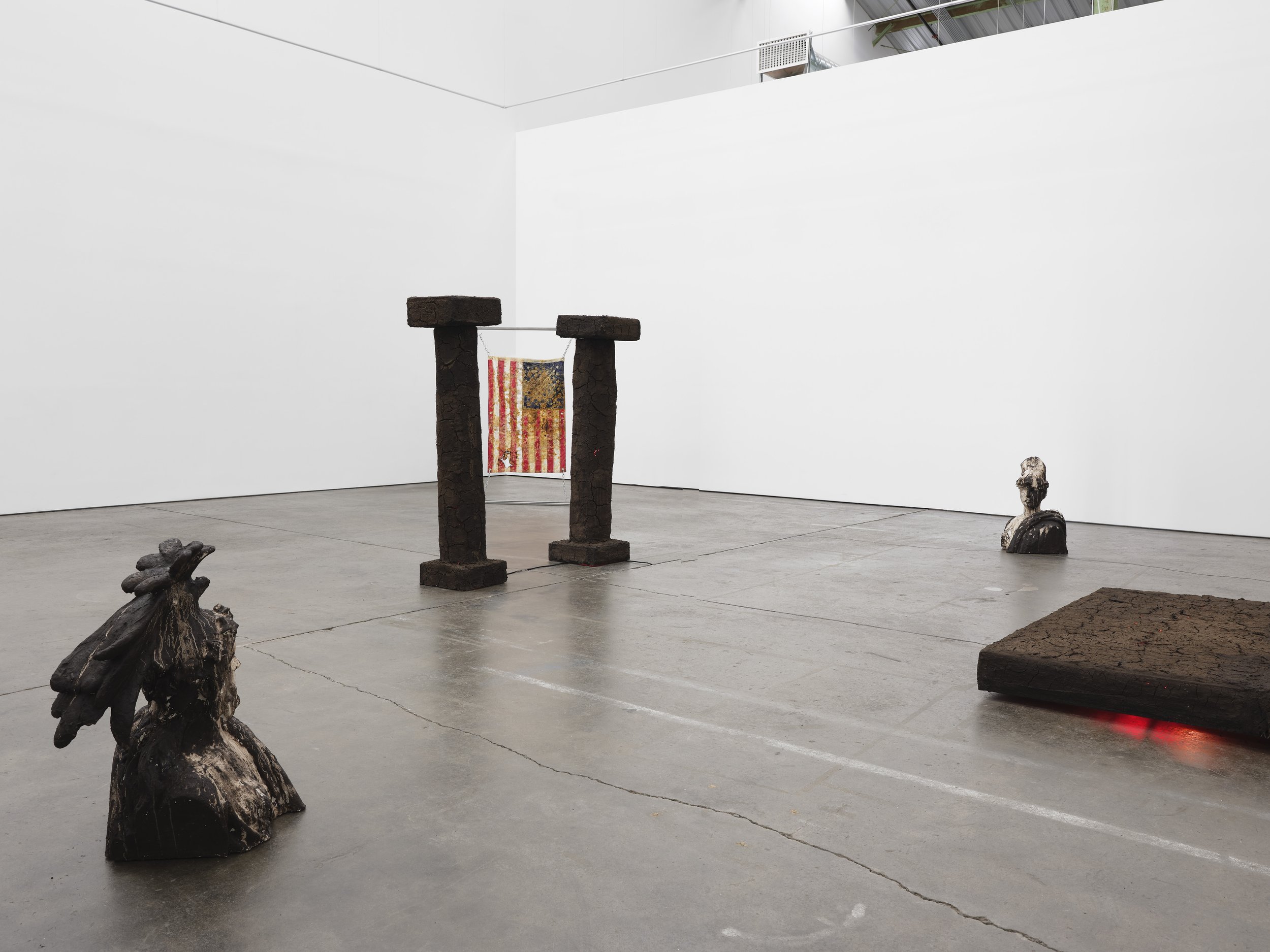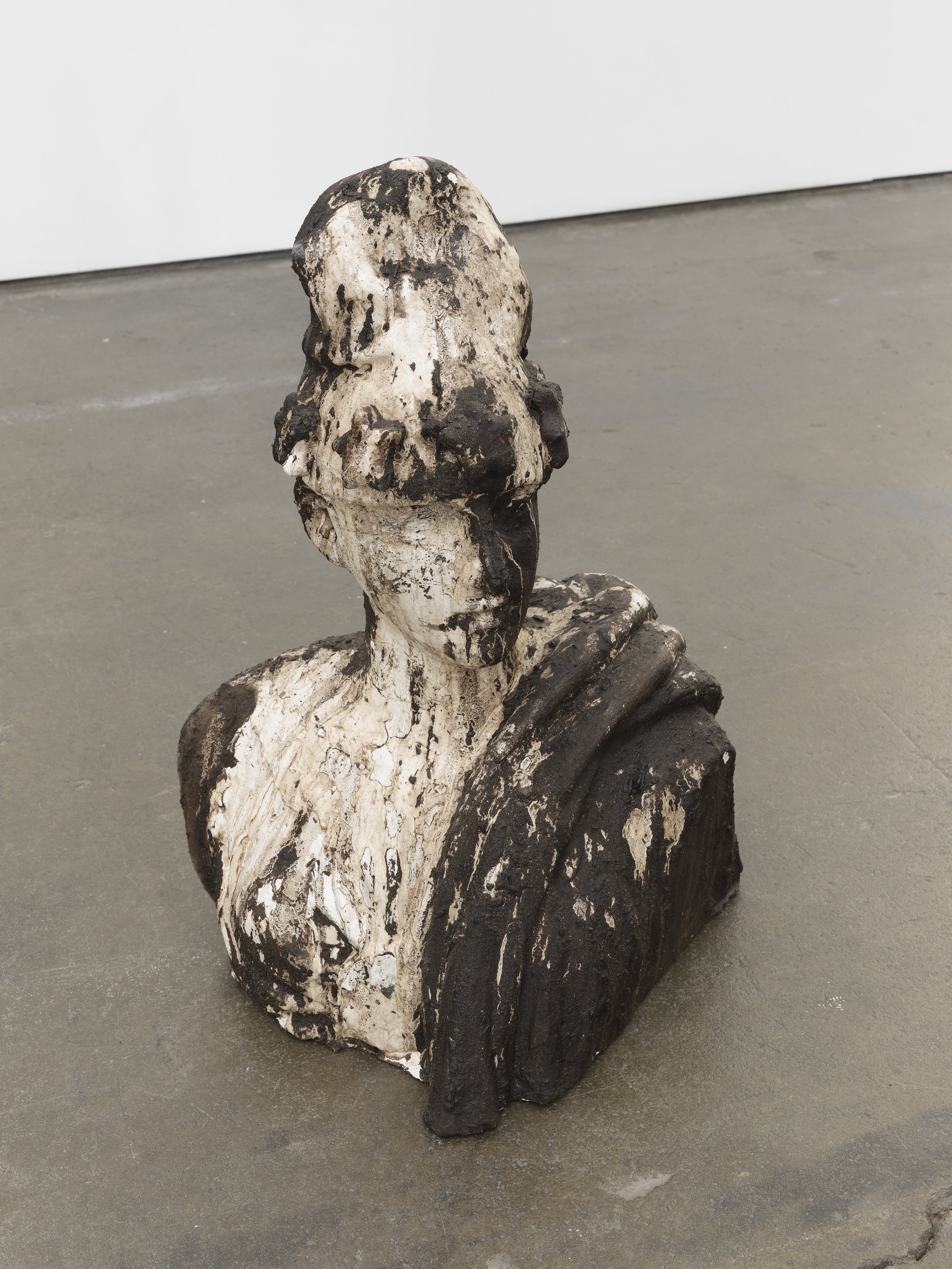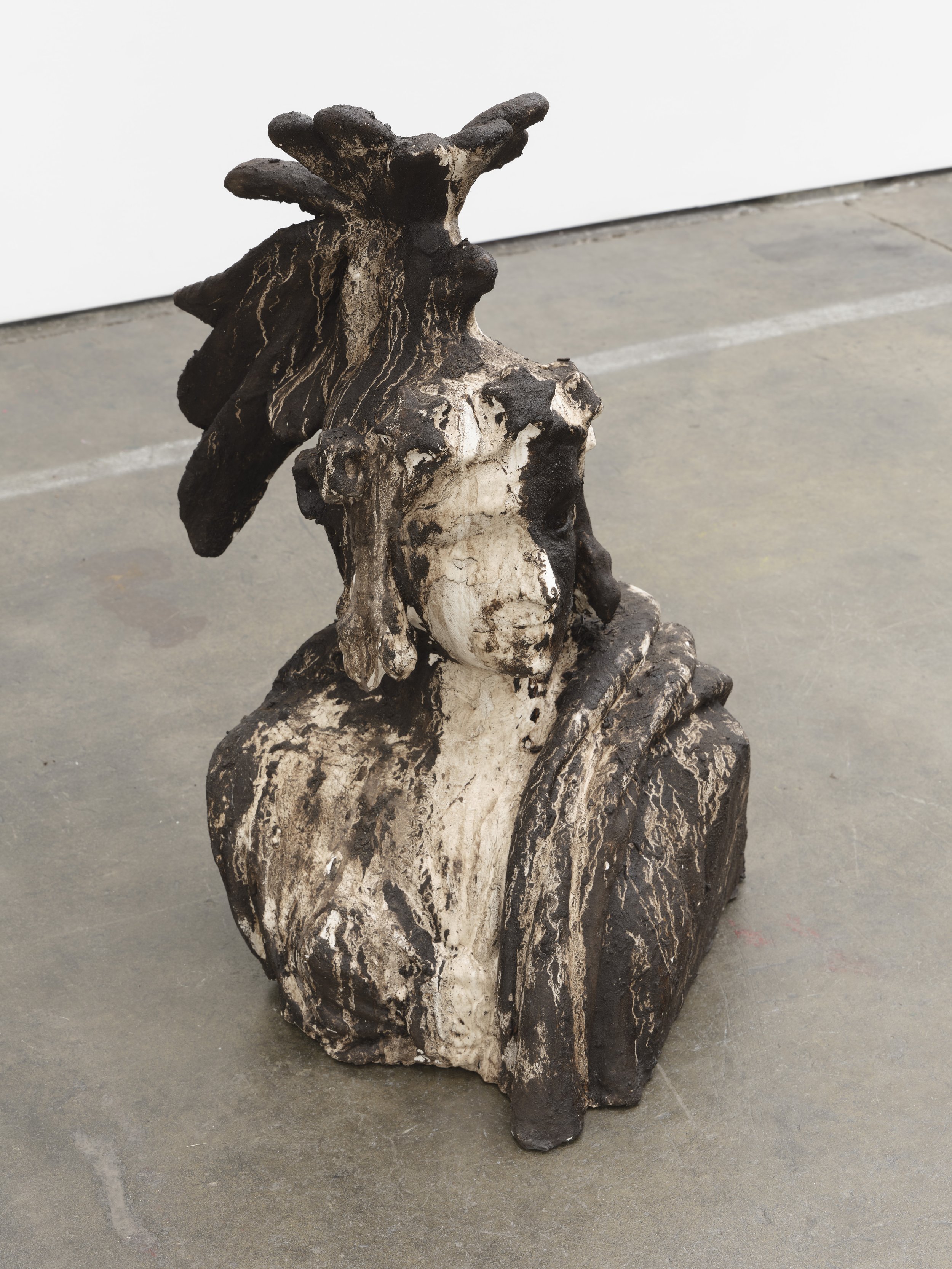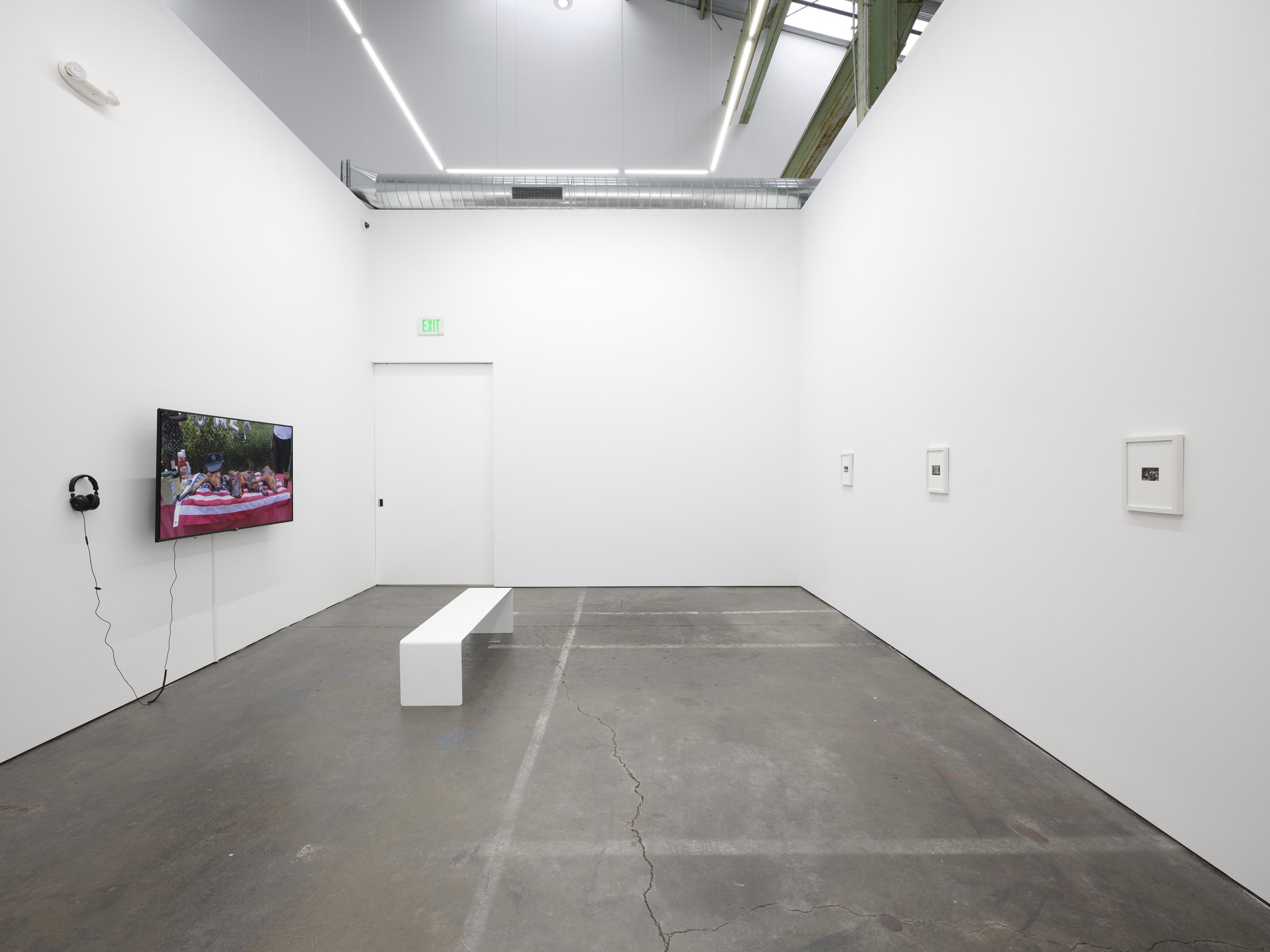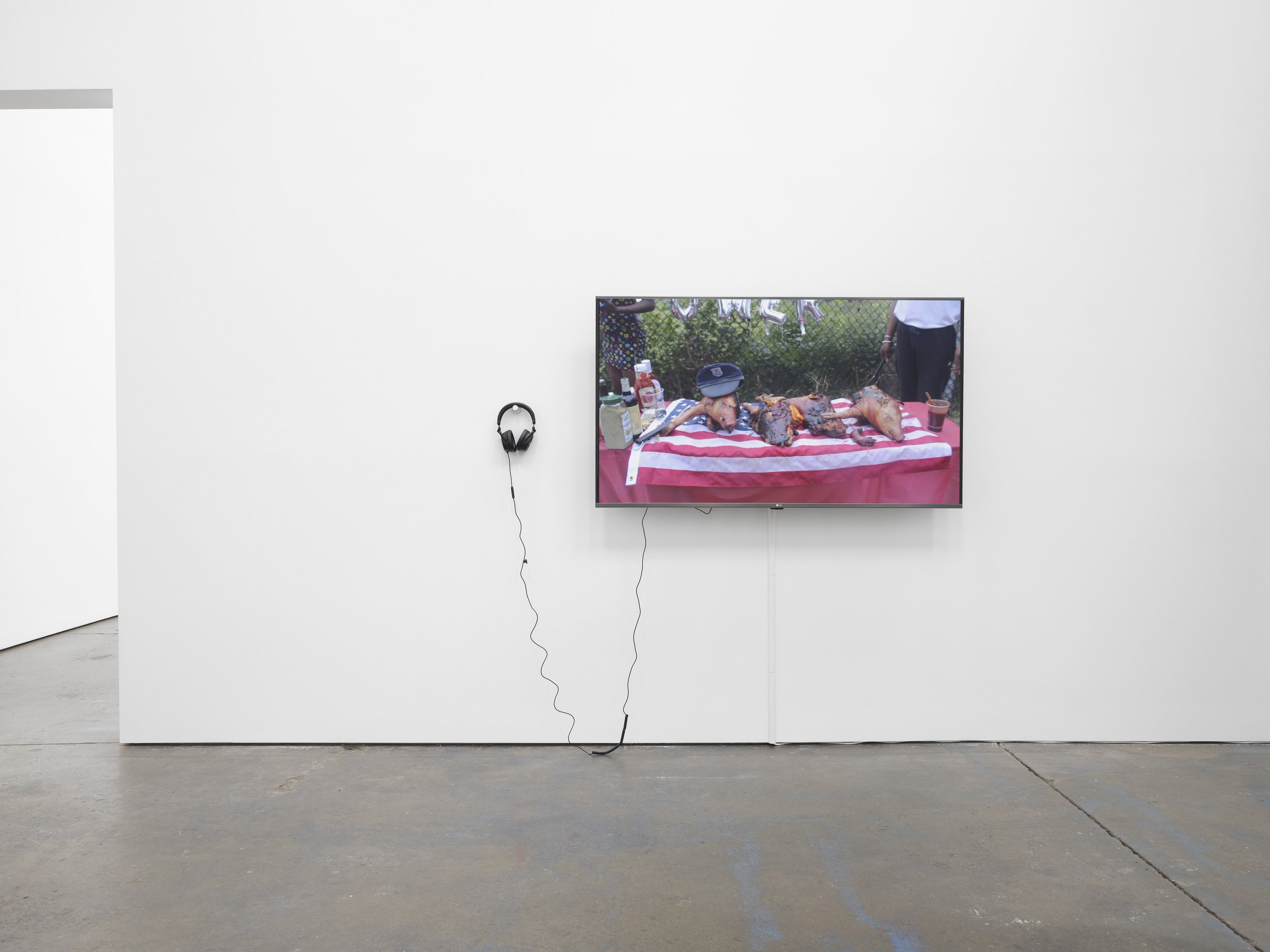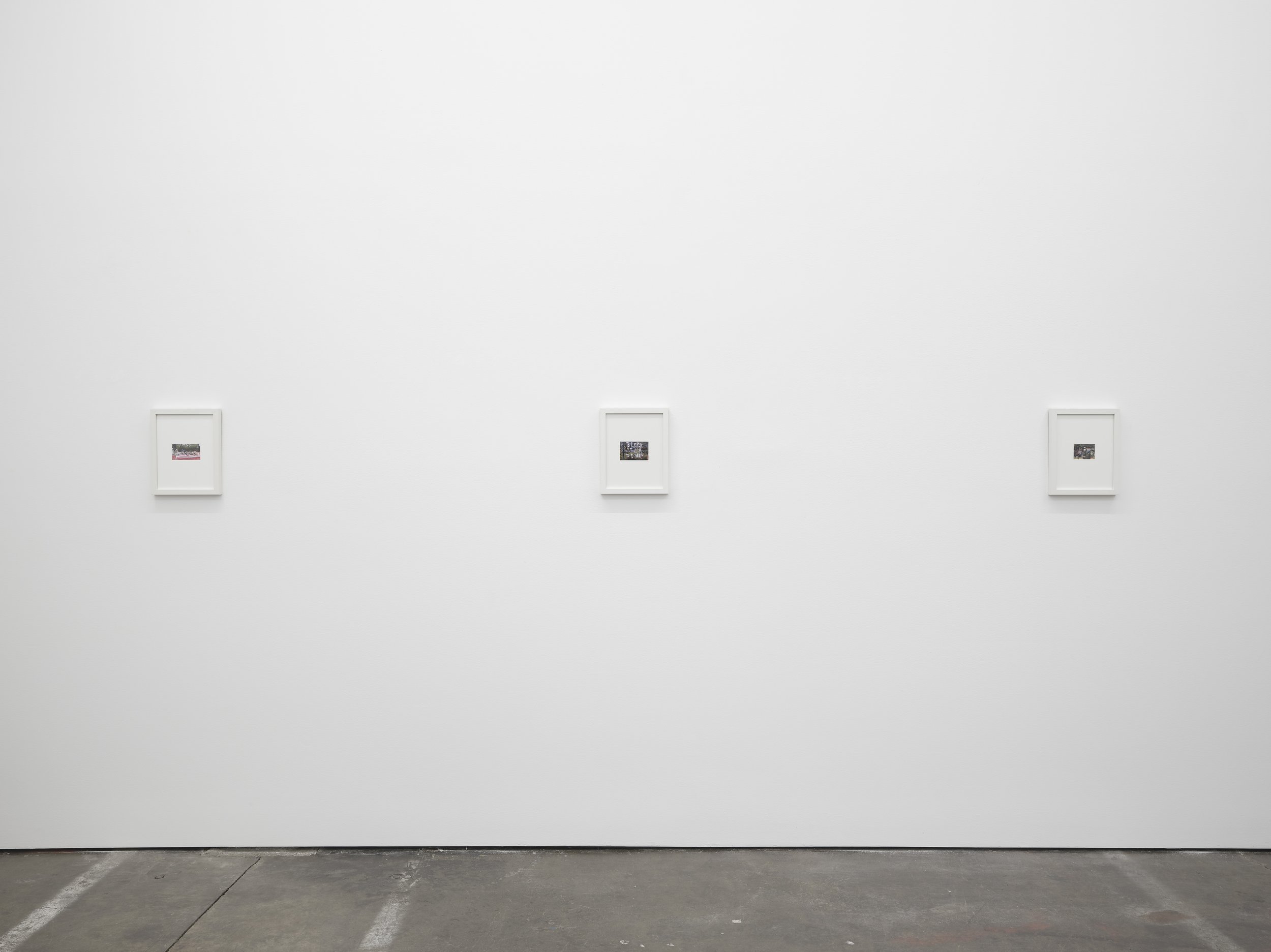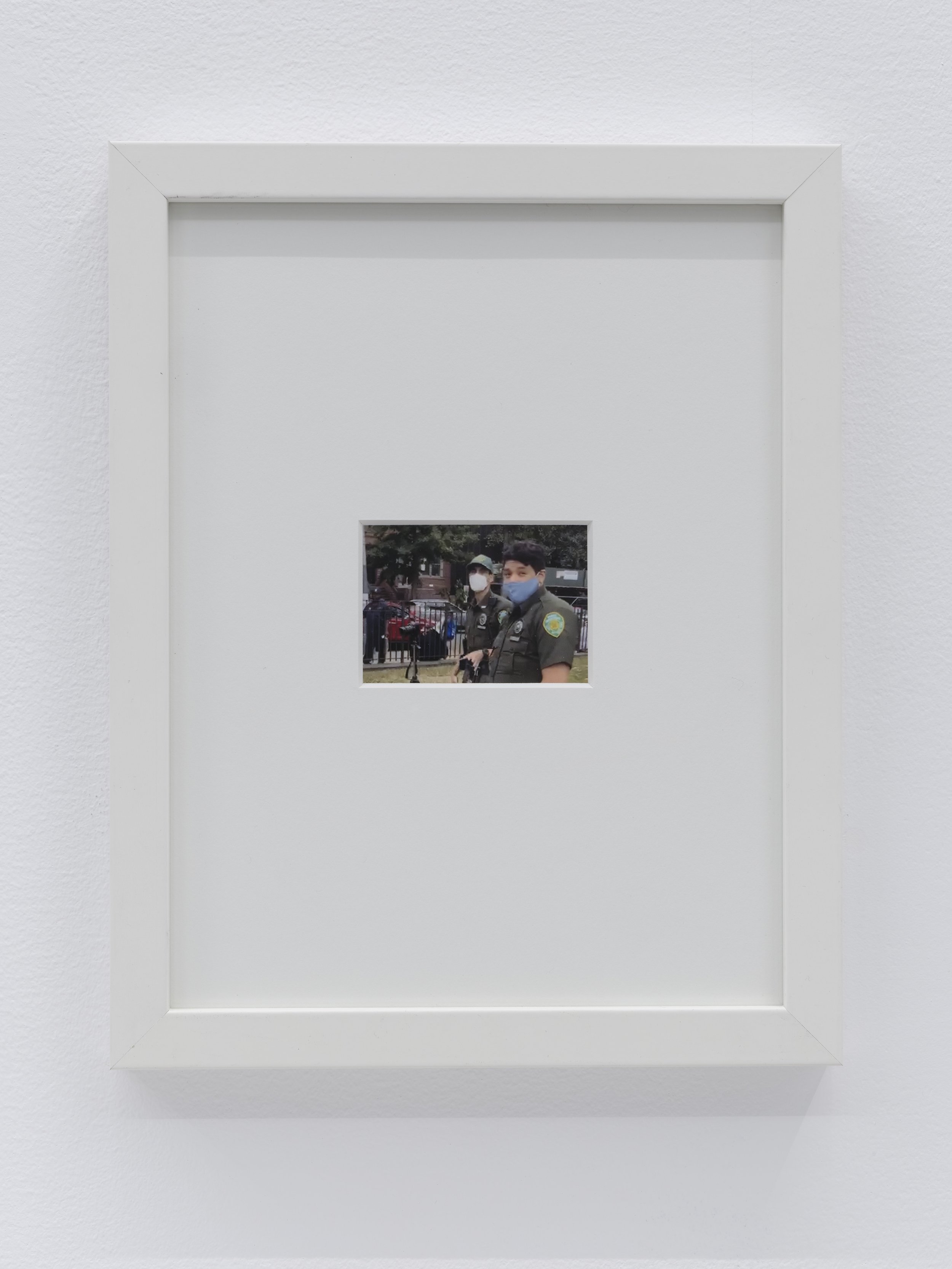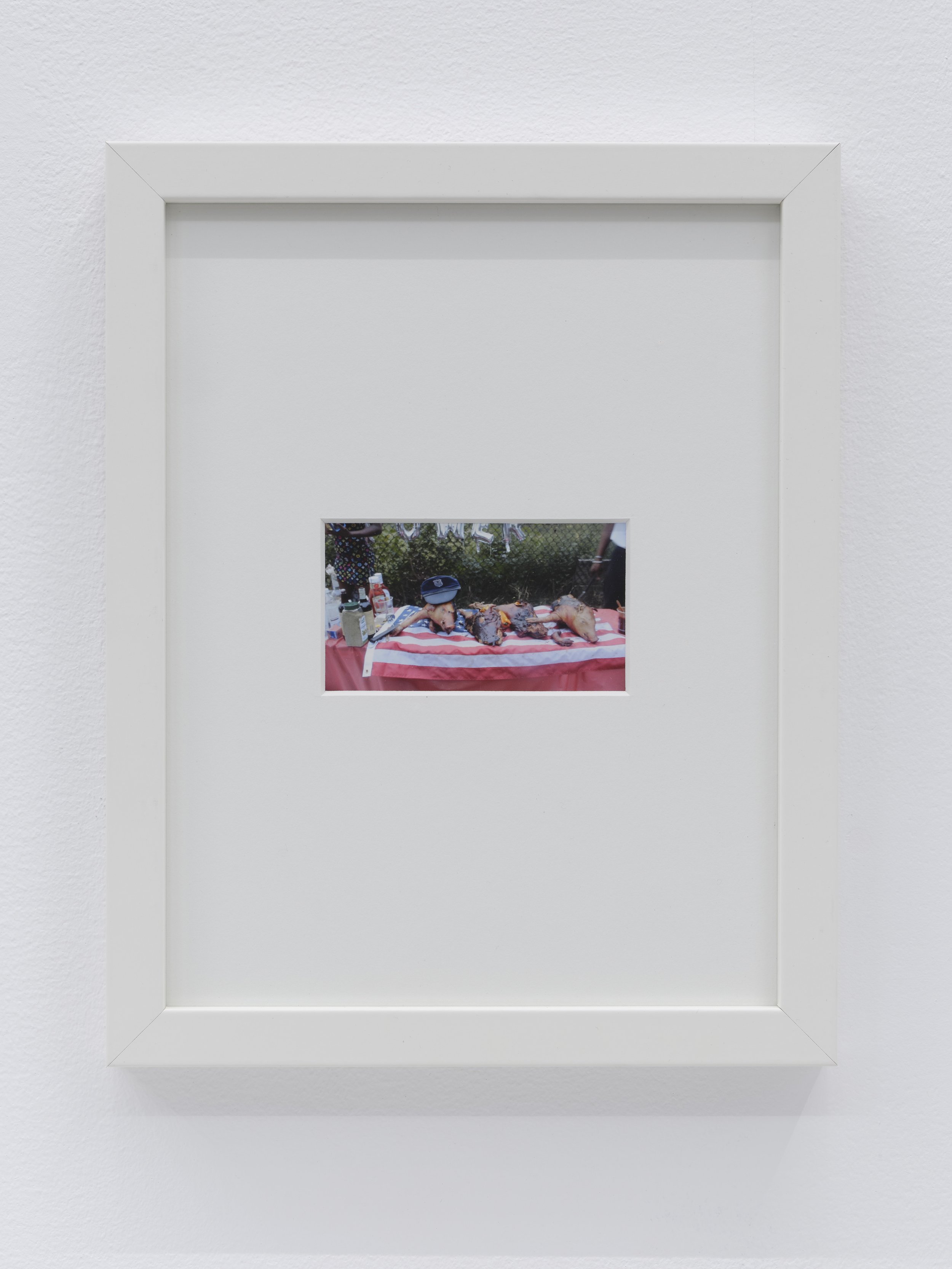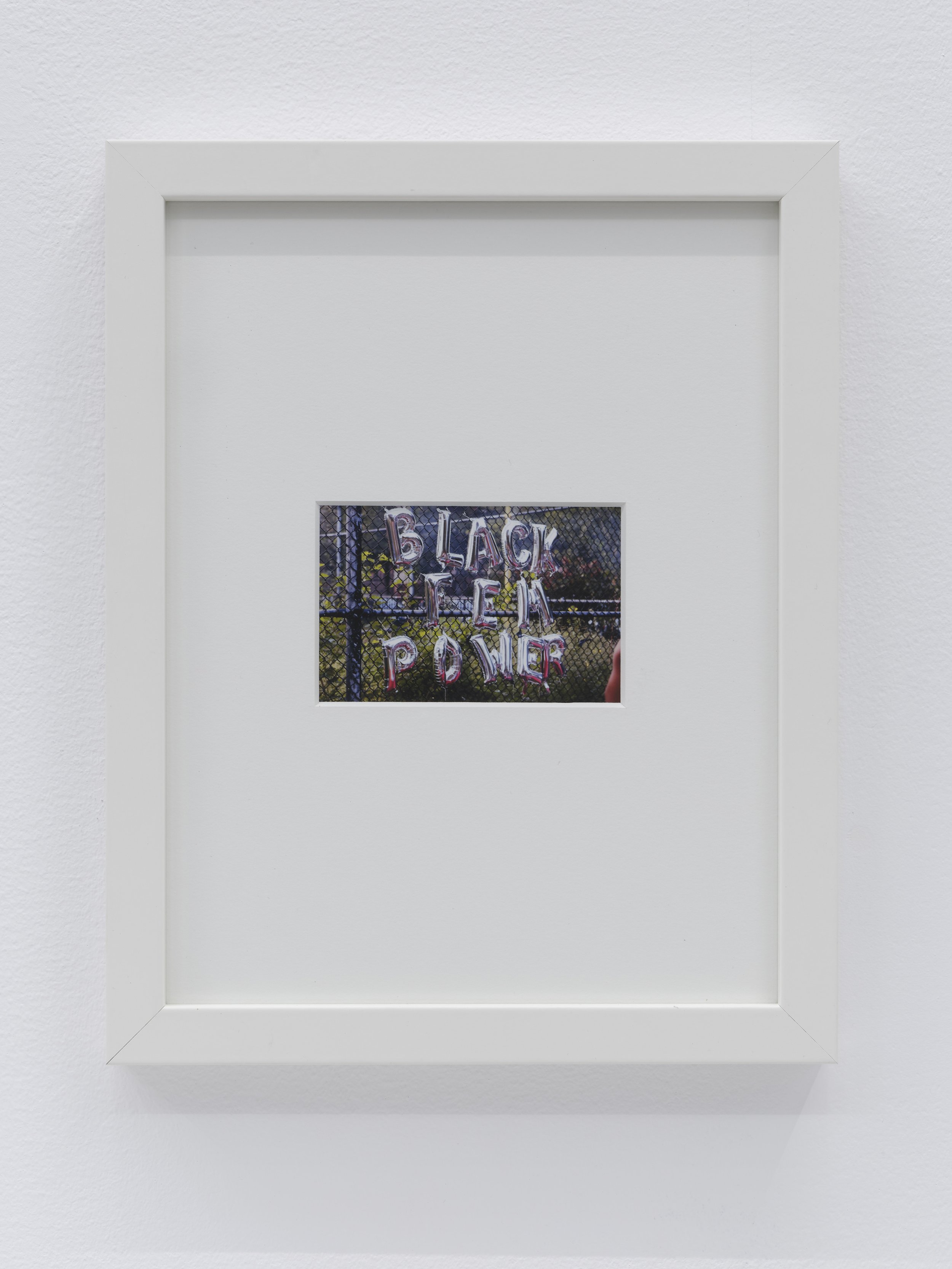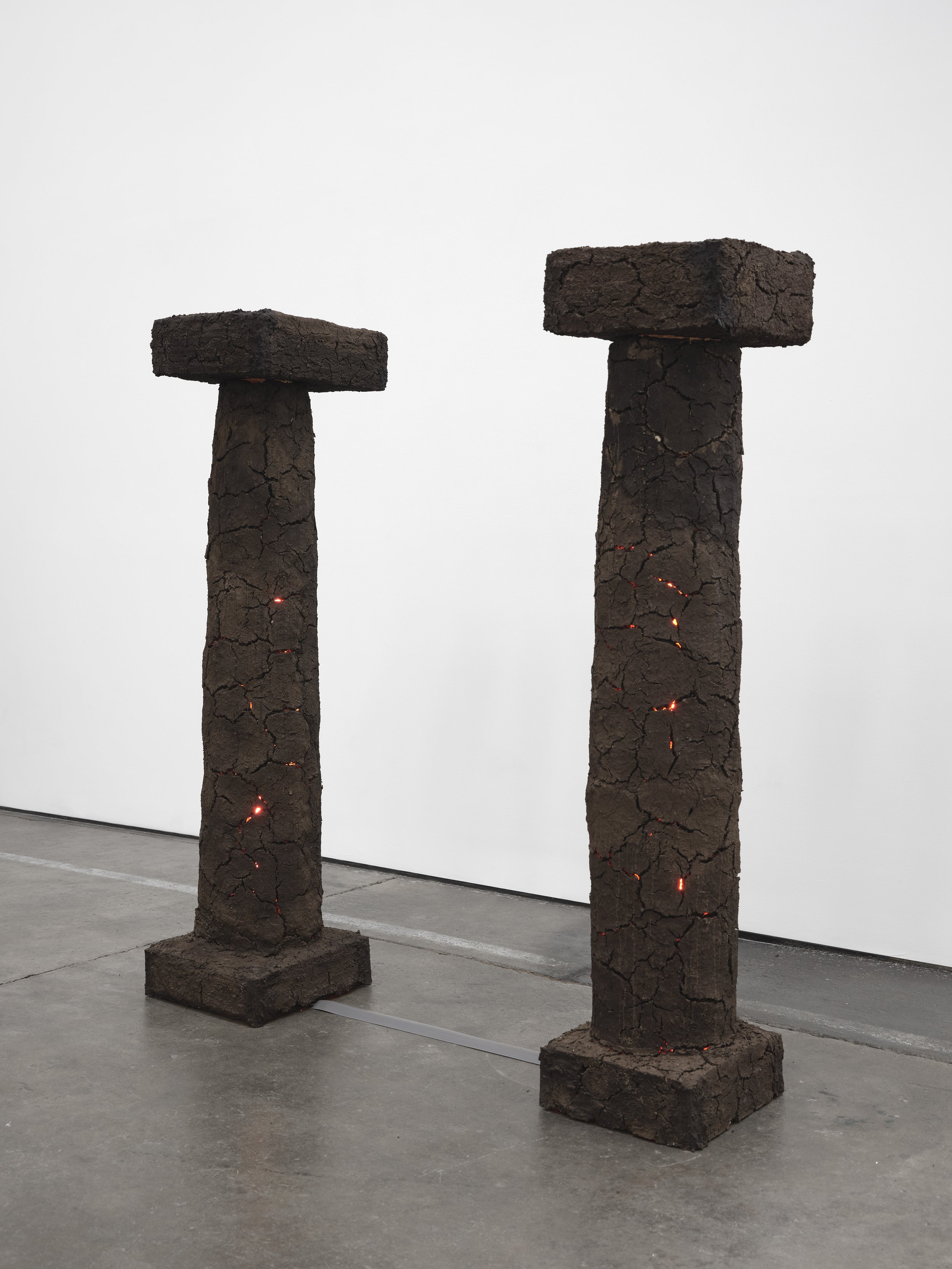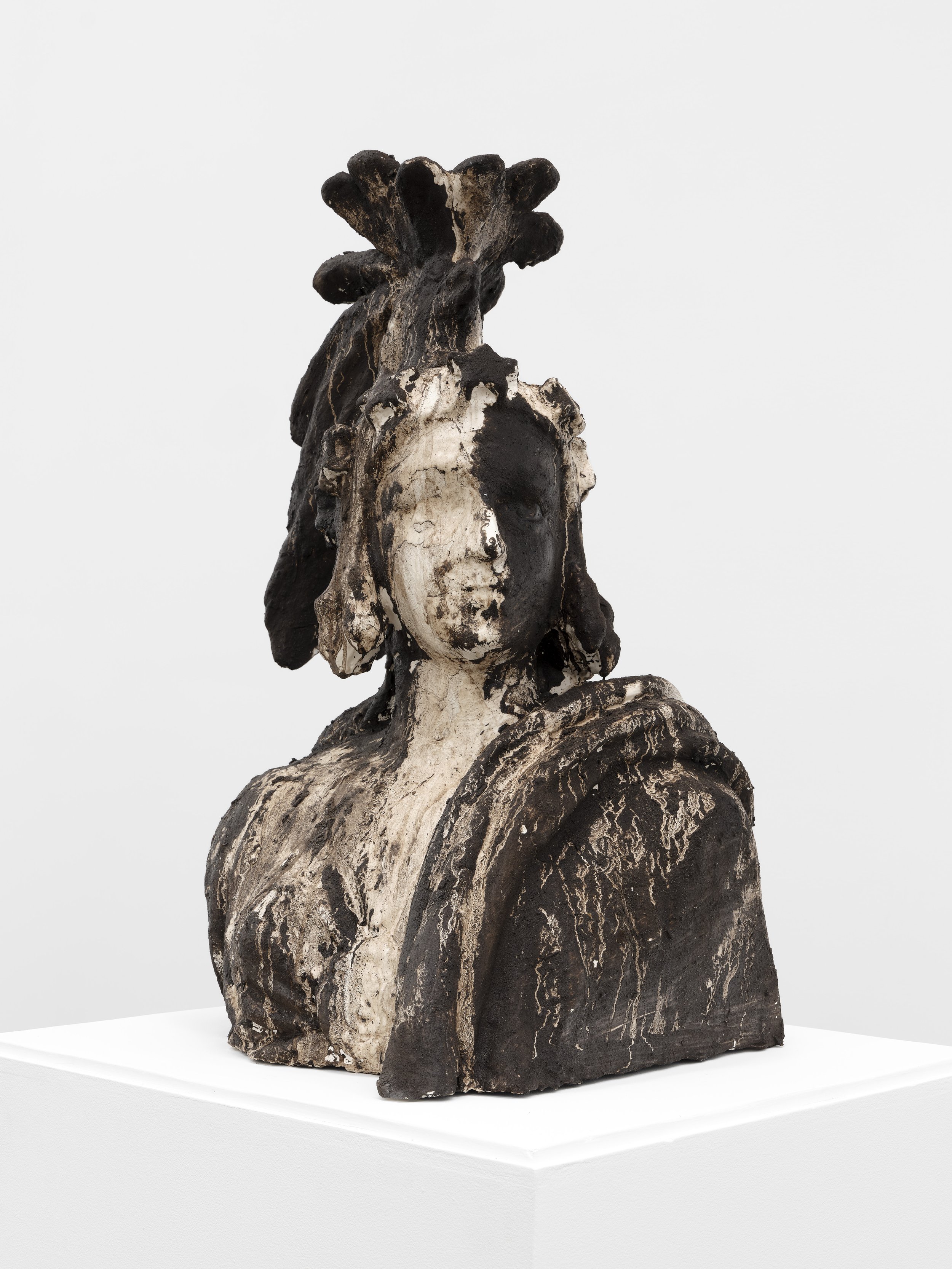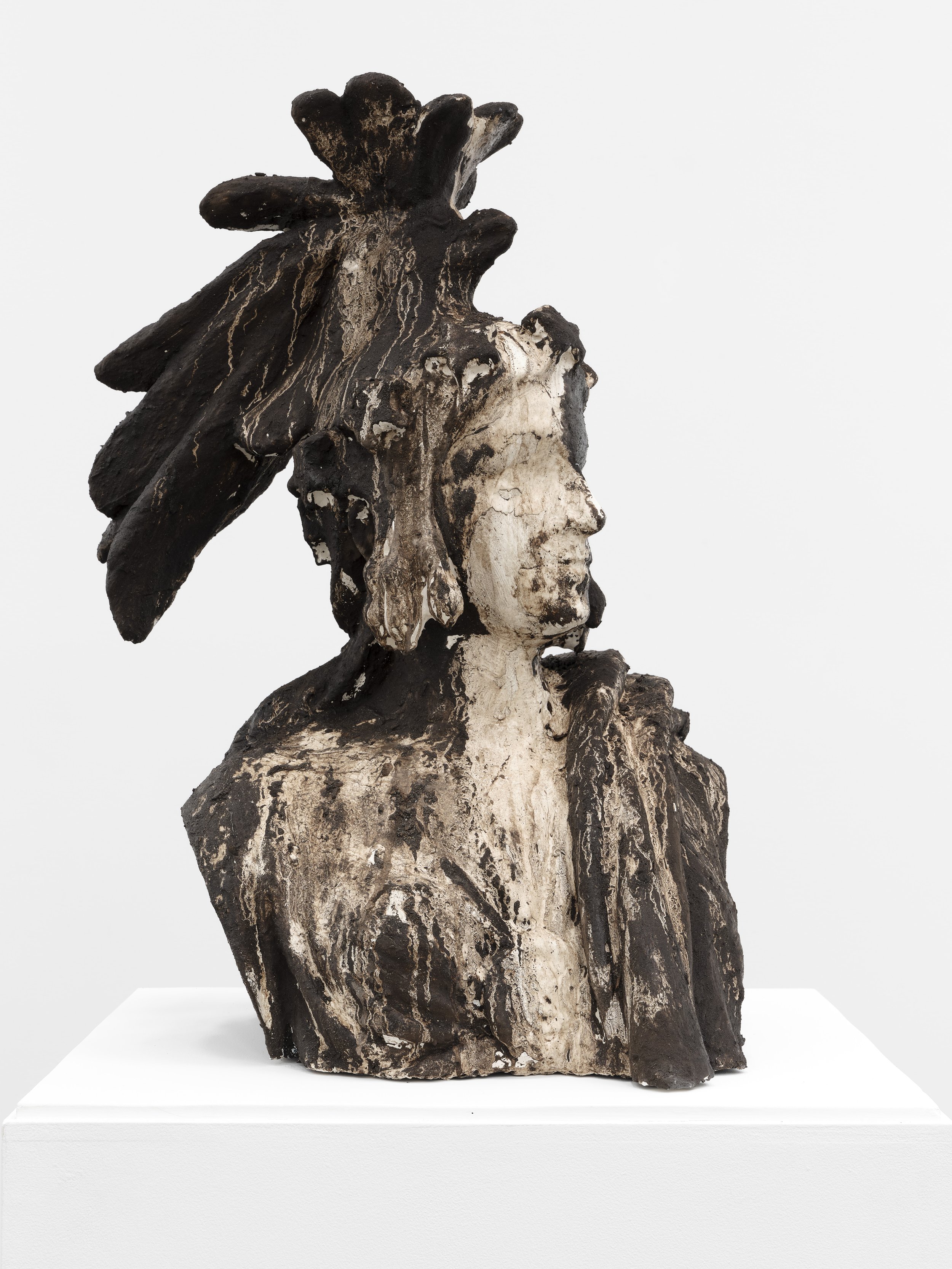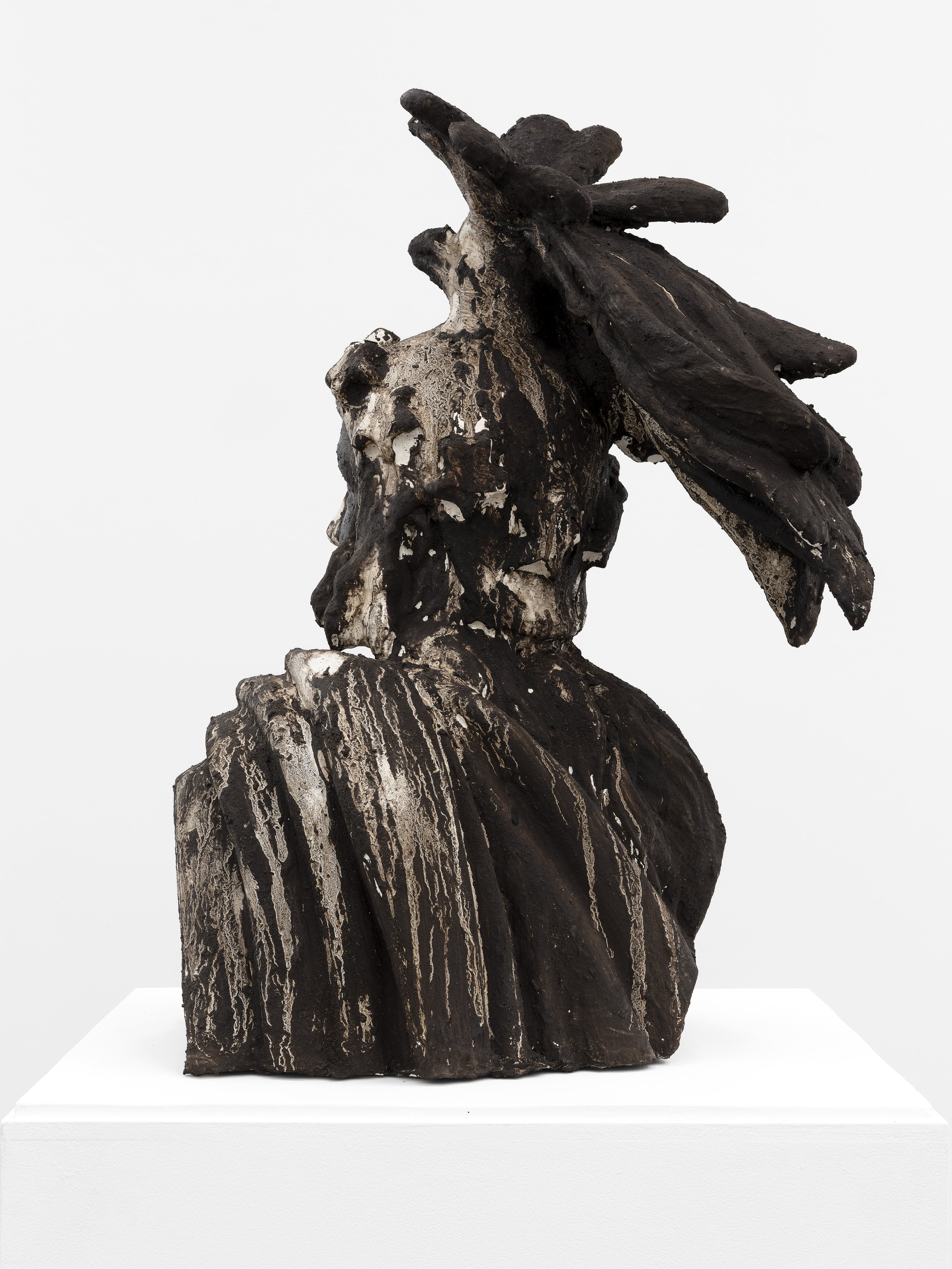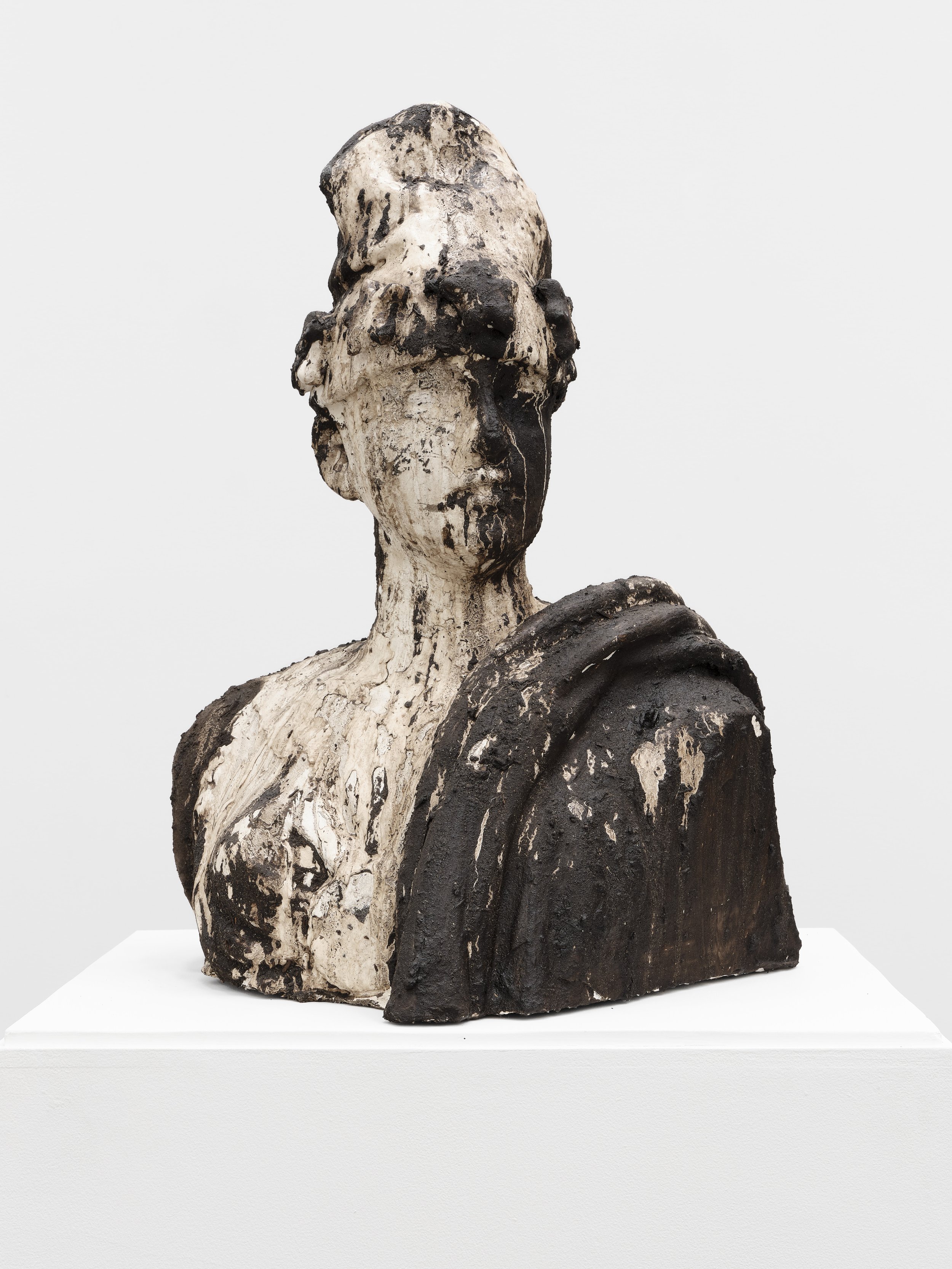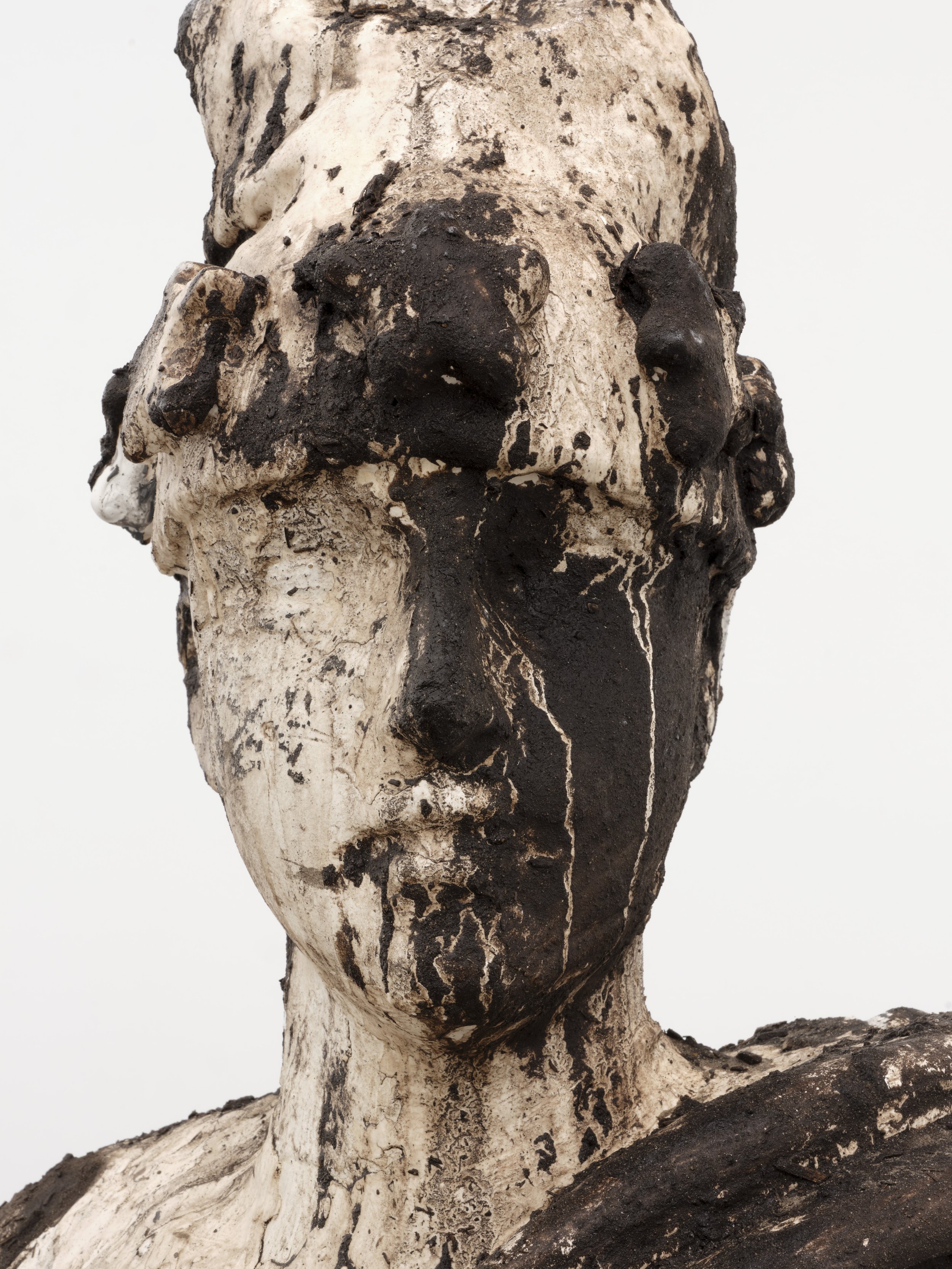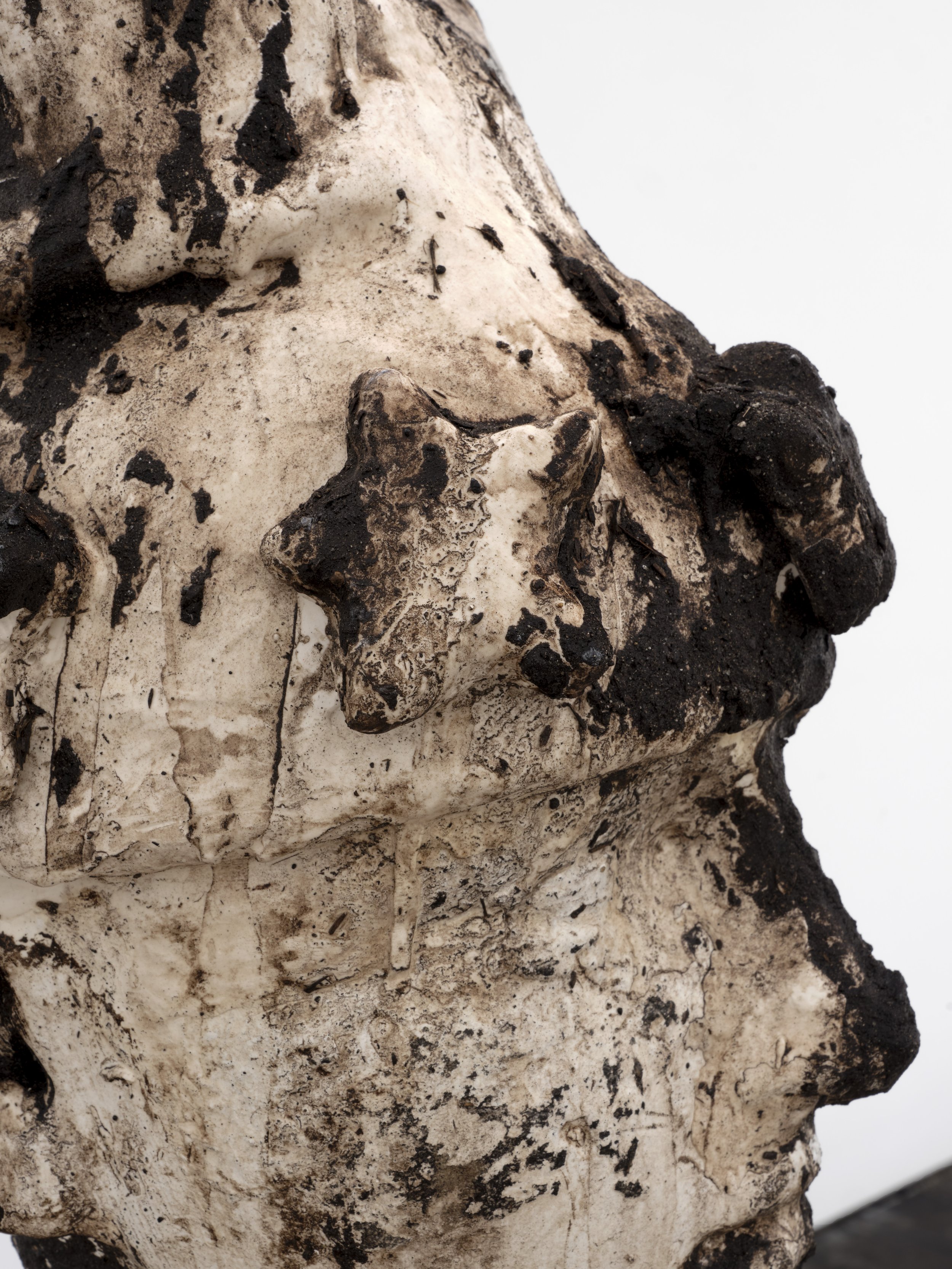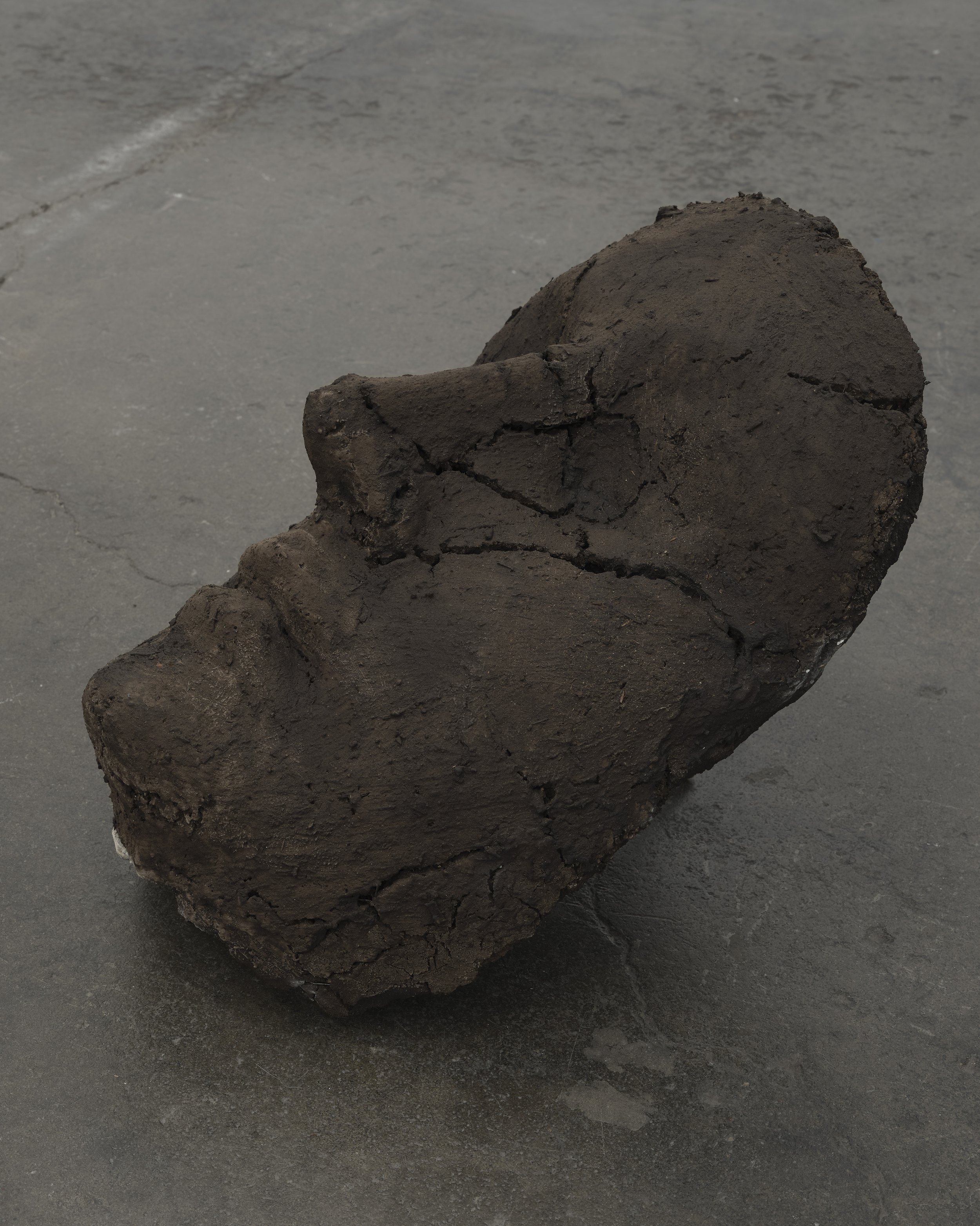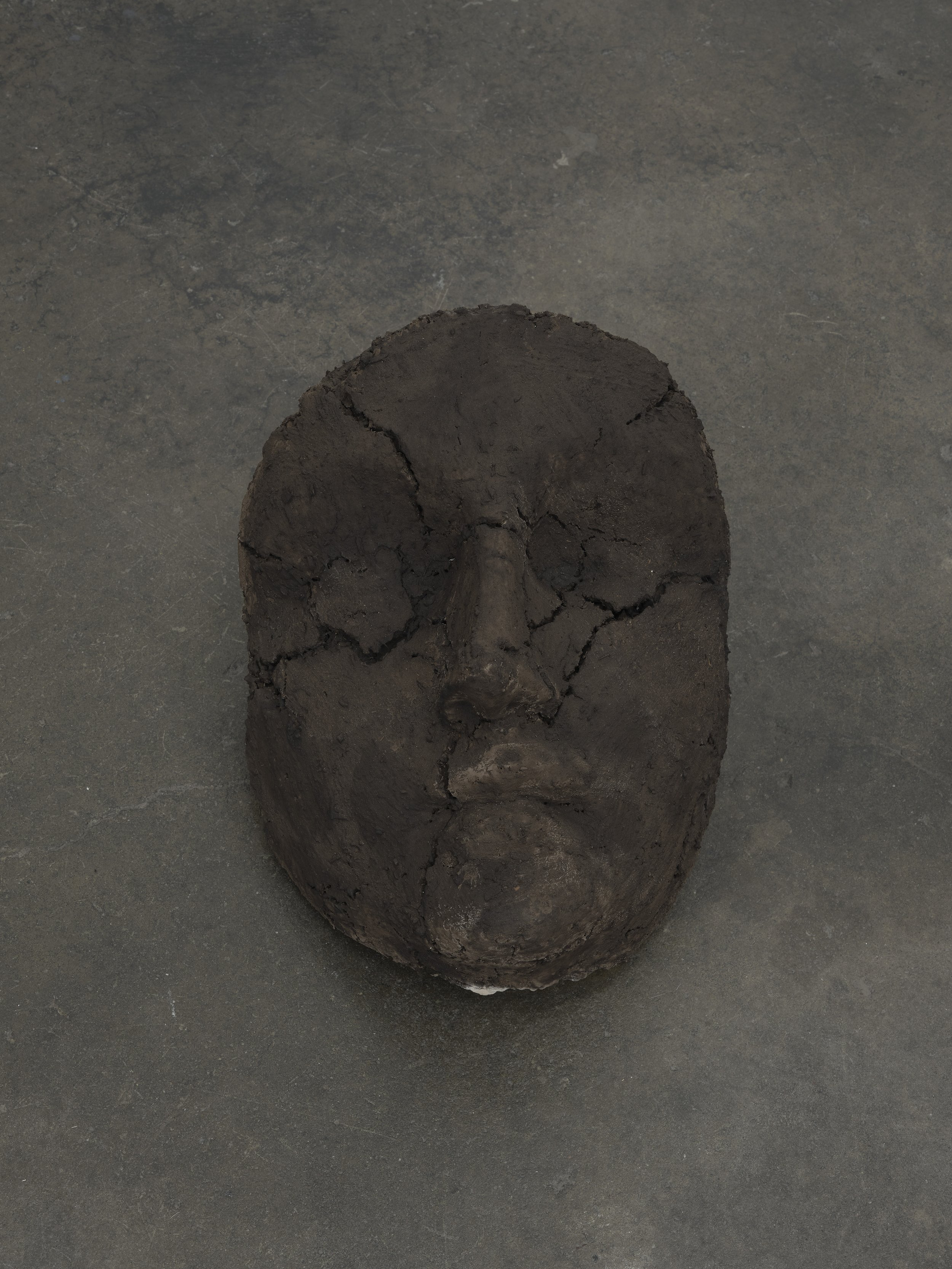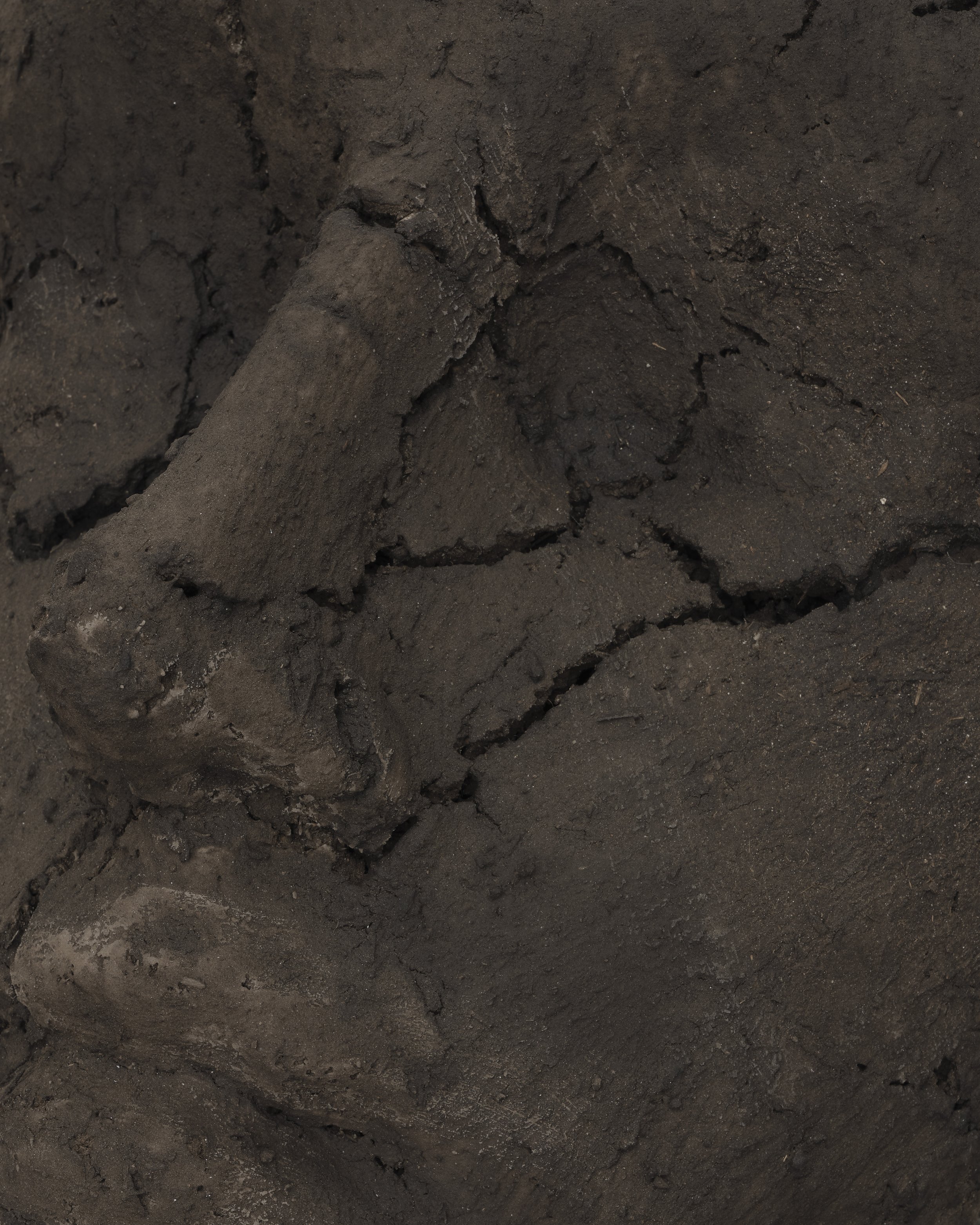A Crack Beneath the Weight of It All, March 9 - April 29, 2023
Altman Siegel Gallery, San Francisco, CA
*Press release below
Working in a range of media, Kiyan Williams’ distinctive artworks make visible the fissures and dissonances within dominant narratives of history and American identity. For their first solo exhibition with Altman Siegel, A Crack Beneath the Weight of It All, Williams presents a series of new sculptures tracing the inherent and subterranean violence embedded in architectural forms and symbols of state power. Through an irreverent process of recreation, Williams appropriates iconic monuments and symbols and invites the viewer to witness gestures of material and conceptual transformation. An American flag is battered, seasoned, cooked in oil, and suspended in steel chains. The Statue of Freedom is taken off its pedestal atop the Capitol Building; columns, the neoclassical forms that hold up government buildings, are transformed into earthen relics evoking the charred remains of Pompeii. Appearing in states of erosion and eruption, these new sculptures simultaneously evoke scenes of an ancient past and dystopian/decolonial future, simmering with an undercurrent of social upheaval and burning rebellion.
A rupture / a break / a breaking / a break thru / a crack beneath the weight of it all, the titular work of the exhibition, is a rectilinear sculpture with spectrums of orange and red light emanating through a surface of earth. Williams constructs a geometric form onto which multivalent and rhizomatic associations can emerge. Does it evoke scorched earth? Does it reference minimalist sculpture? A lakebed dried by drought? The surface of Mars? A lava ground? Wounded flesh? In A Crack Beneath the Weight of It All, the architectural and monumental collapse to suggests the fragility of structures of containment - governmental, ideological, and otherwise.
The Statue of Freedom, the bronze monument designed by Thomas Crawford that stands atop the dome of the U.S. Capitol building in Washington, D.C., was the starting point for William’s 2022 installation, Ruins of Empire, featured in the Public Art Fund’s Black Atlantic exhibition in Brooklyn Bridge Park. Williams reimagined this historic statue constructing a version from earth rather than bronze. The soil surface of the artist’s adaptation makes the sculpture appear fragile and malleable. Returning to the Statue of Freedom for the show at Altman Siegel, Williams researched the history of the monument and discovered that the original proposal for the sculpture was rejected because the figure was wearing a liberty cap, a Roman symbol of emancipation. At the time, U.S. Senator and U.S. Secretary of War, Jefferson Davis, who would later become President of the Confederacy, was in charge of the Capitol construction and offended by the reference, demanded a revision to the sculpture. In the final version atop the capitol, a military helmet, with an American eagle head and crest of feathers, replaced the liberty cap. In unearthing this history, Williams again reimagines the Statue of Freedom as excavated plaster busts with headpieces and adornments that subvert the militarized and imperialist version that was ultimately adopted, and tell a story of shifting power dynamics and of freedom.
In the second gallery, Pig Roast, a video of a barbecue the artist held in Bed-Stuy, Brooklyn, shows Williams engaged in the action of material transformation in real time. Williams invited a group of friends and neighbors to join them in a participatory performance of roasting suckling pigs adorned with the paraphernalia of police uniforms, blurring the line between performer and spectator. The video meditates on intramural gatherings as sites of fugitive and subversive play within existing structures of policing and regulation.
For Williams, whose vast references span science fiction cinema, archeological sites, and extreme geological events (all of which speculate how the world is made and unmade), cracks and fragmentation are a visual language of what scholar Jack Halberstam call “the grammars of unbuilding.” Their new sculptures bring together dense earth and ephemeral light, creating a material contrast that calls attention to the fractures, the ruptures, the interstitial space, which “inhere to queer negativity, to abolitionist projects, to queer failure and trans-anarchy… and oppose the language of repair that can be deployed for liberal purposes to shore up the status quo.”
